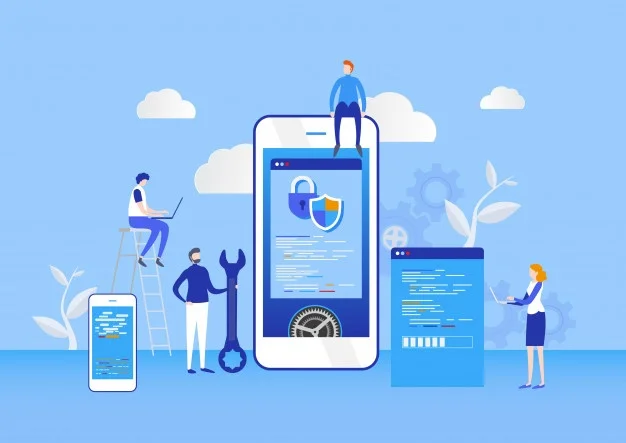Today’s era has witnessed a surge in mobile technology due to the ease it provides. Mobile app development allows edge and has been helpful in almost every task in daily life. There are used in the fields of social media, education, lifestyle, news, history, and many more. The sole aim of millions of apps available on the App Store is to make our lives more straightforward than ever before.
If you are planning to get assistance from a mobile app development company for your business, then it’s imperative to understand the Mobile App Development Lifecycle for you to know if it will fit your marketing goals. The mobile app development process is similar software development lifecycle (SDLC) and goes through the following stages of mobile app development.
Stages of Mobile App Development
The mobile app development lifecycle is divided into the following six stages. It will make your Understanding of the Mobile App Development Lifecycle easier:
1. Strategy
Before starting to build an app, the first step is to carve out a strategy on how you will turn your idea into reality. Everyone’s aim behind developing an app may differ from each other but there are some essential criteria that everyone deals with:
- Identifying the users of the application
- The competition volume
- App’s goals and objectives
- A mobile platform for the app on which it is to be developed (iOS, Android)
Your strategy will get you a clear picture of how your app will look like. With this as a foundation, let’s get deeper into the next steps of the mobile application development lifecycle.
2. App Analysis and Planning
At this subsequent stage, use cases are defined based on the functionalities; you will be imparting in your app. The mobile app development company makes sure that all the requirements are met. Once the needs are identified, a product roadmap is prepared.
The planning phase also includes what skills are to be used to build the apps if you are about to build an app for the Android platform or both iOS and Android platforms.
You should keep a check on the domain name that you have decided and make sure it’s not already in use.
3. UI / UX Design
The first impression always lasts. The core purpose of an app’s design is that it should be intuitive and attractive as well as offers a seamless end-user experience. The more user-friendly your app is, the more are the chances of getting hits to it and more users will be engaged.
App Architecture
Mobile app UI design first determines the data the app will display, the data it collects, user interactions, and the user journeys within the app.
This workflow helps to identify the navigation structure the app will follow.
Wireframes
Wireframes are the preliminary sketches made digitally that represent the final mobile app design. They display the visual structure of an app’s functional requirements. They are a quick and cost-effective approach for app layout design.
Prototyping
Prototyping is done for simulating the user experience and the app’s workflows, which will be followed eventually. Prototypes are useful in testing your app’s design and functionality at a prior stage.
Various companies practice prototyping to review the app’s proposed functionality.
4. Application Development
Once the architecture is defined and you have selected the technology stack to be worked upon, it’s the time when the application development is undertaken. It goes through three integral parts:
i. Back-end technology
The back-end includes database and server-side objects for supporting functions of your mobile app.
ii. API
The API signifies communication between the app and the back-end server.
iii. Front-End
An end-user uses the front-end.
As every development milestone is achieved, it is passed on to the app testing team for quality assurance and checking if the application is working as desired.
5. Testing
Testing is performed to ensure if the developed mobile app is stable and secure. For the purpose, first, the test cases are prepared which include UX testing, performance testing, stress testing, functional testing, security testing, and device testing to ensure if the app is working fine from every possible aspect.
6. Deployment & Support
After the development and testing are done, the native mobile app is released on the app stores, such as Apple App Store and Google Play.
Releasing an app’s release in the app store requires:
- Application Title
- Description
- App Category
- Meta Keywords
- App Icon
- Pictures
Once submitted, apps go through a review process to know how well it follows Apple’s iOS development guidelines.
Conclusion
Mobile app development is a systematic process and knowing about it is essential if you are planning to get a hands-on it. Appslure has been a leading mobile app development company in Delhi since 2011. Over the years, Appslure has provided mobile app development services to organizations offering various products and services. We too follow every step stated above in the mobile apps that we deliver to ensure a successful launch of your project.

